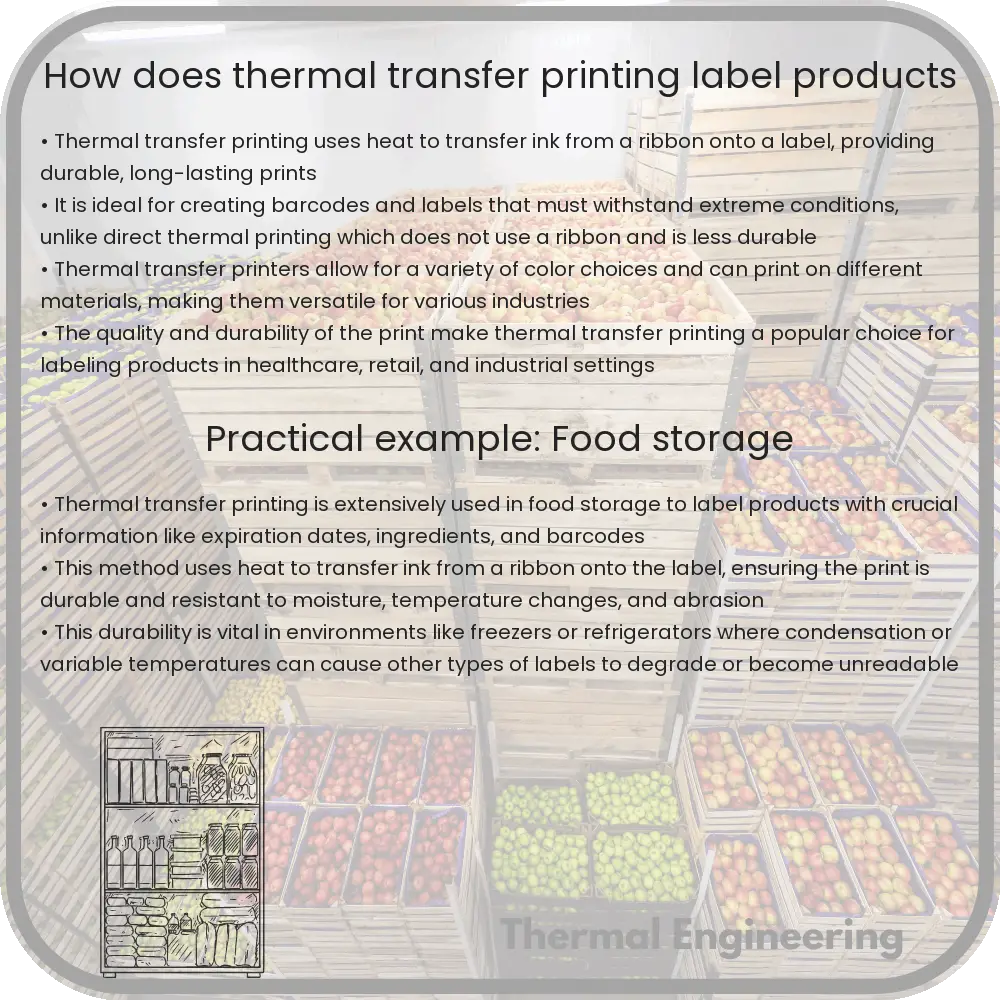An in-depth guide to thermal transfer printing, a durable labeling method ideal for various industries, highlighting its process, components, advantages, and applications.

Understanding Thermal Transfer Printing in Labeling
Thermal transfer printing is a popular method used extensively for labeling products in various industries such as manufacturing, healthcare, and retail. This process involves the transfer of ink onto a substrate (typically labels) using heat and pressure, which results in durable and high-quality printouts that are crucial for effective product identification and tracking.
How Does Thermal Transfer Printing Work?
The core component of thermal transfer printing technology is the thermal transfer printer, which utilizes a heated print head and a ribbon coated with ink. The key steps in the thermal transfer printing process are as follows:
- Insertion of Ribbon and Label: A ribbon coated with a thin layer of ink is loaded into the printer along with the label material (substrate).
- Heating of Print Head: The print head of the printer is then heated to a specific temperature. The precise temperature required can vary depending on the type of ribbon and label material used.
- Application of Heat and Pressure: The heated print head is pressed against the ribbon, which is positioned above the label material. The heat causes the ink to melt.
- Transfer of Ink: As the ribbon comes in contact with the substrate through the applied pressure, the melted ink from the ribbon transfers to the surface of the label.
- Final Output: After the ink cools and solidifies, the print head lifts, the ribbon advances, and the finished label is rolled out or cut for application. This results in a crisp, clear, and highly durable printed label.
Components of Thermal Transfer Printing
- Thermal Print Head: A critical component that directly heats specific areas of the ink ribbon to create the desired image on the label.
- Ribbon: Made from a polyester film coated with a layer of wax, resin, or a combination of both, which melts under heat to form the print on the substrate.
- Label Material (Substrate): Can include materials such as paper, polyester, and polypropylene, chosen based on the durability and resistance needed.
Advantages of Thermal Transfer Printing
Thermal transfer printing offers several advantages that make it an ideal choice for many labeling requirements:
- Durability: Labels created via thermal transfer are resistant to elements such as water, heat, and UV light, making them suitable for both indoor and outdoor use.
- High-Quality Images: This method produces high-resolution images that are clear and legible, essential for scanning and reading barcodes and text.
- Flexibility: The process is versatile, allowing for printing on a variety of materials and the use of different ribbon formulations for specific needs.
- Longevity: The prints are long-lasting and do not smudge or fade over time, ensuring the longevity of the information printed on labels.
Applications of Thermal Transfer Printing
Thermal transfer printing is used extensively across different sectors:
- Retail: For price tagging and product labeling, where durability and clarity are needed.
- Healthcare: In hospitals, it’s used for patient IDs, specimen labels, and pharmacy labels, where the accuracy and permanence of printed information can be critical.
- Manufacturing: For asset tagging, inventory labeling, and product identification, aiding in the efficient management and tracking of goods.
- Electronics: Used for labeling components where small, precise labels are necessary.
In conclusion, thermal transfer printing is an indispensable tool in modern labeling, offering precision, durability, and versatility. Whether it’s for industrial, retail, or personal use, the thermal transfer printing process ensures that labels perform their function effectively, maintaining readability and integrity under various conditions.